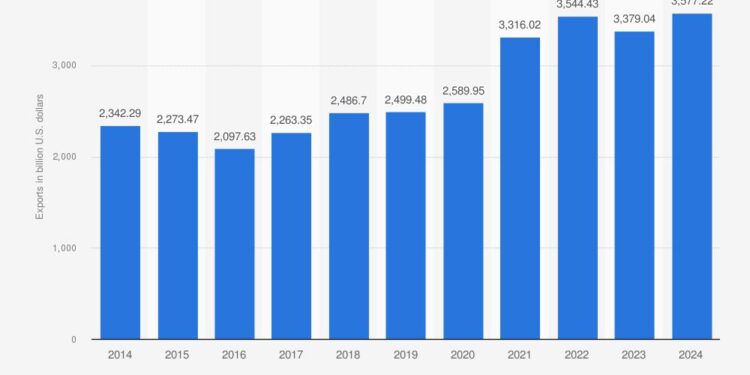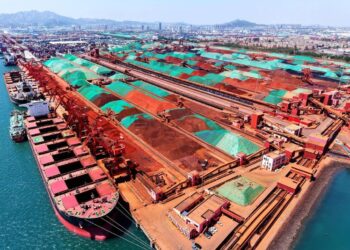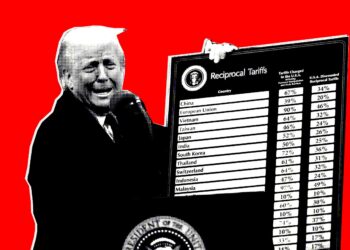In the wake of the escalating trade tensions between the United States and China, exporters in China are navigating a challenging landscape marked by uncertainty and economic strain.As the Trump administration’s trade war intensifies, with tariffs and policy changes impacting global supply chains, many local businesses are grappling with the repercussions of a fractured relationship between the two economic giants. In this article, we explore firsthand accounts from Chinese exporters who are adjusting their strategies and reevaluating their markets in response to the shifting dynamics. Their insights provide a unique viewpoint on the real-world implications of trade policies and the resilience of the Chinese economy in the face of adversity.
Impact on Chinese Manufacturers as Tariffs Bite
As the escalating trade conflict between the U.S. and China continues, manufacturers in China are grappling with the direct consequences of tariffs imposed on a wide range of goods.Exporters have reported significant price increases, which have affected their competitiveness in the international market. Many are feeling the pressure to either absorb these costs or pass them on to consumers, complicating pricing strategies. Key issues highlighted by industry insiders include:
- Reduced orders from U.S. buyers as tariffs increase retail prices.
- Supply chain disruptions, forcing manufacturers to find new suppliers or materials that can still be cost-effective.
- Investment delays, with many companies hesitant to expand operations amidst ongoing uncertainty.
To illustrate the real impact on various sectors, a recent survey among Chinese manufacturers revealed notable trends across different industries. The following table summarizes their predictions for the next quarter:
| Industry | Predicted Impact | Strategies to mitigate Effects |
|---|---|---|
| Electronics | High | Shift sourcing to lower-cost countries |
| Textiles | Moderate | Increase local production |
| Toys | Low | Enhance online sales platforms |
Adaptation Strategies Employed by Exporters Amidst Changing Trade Policies
Exporters in China are actively recalibrating their strategies in response to the evolving trade environment defined by heightened tariffs and shifting regulations. Many of them have adopted several innovative approaches to sustain their competitive edge and ensure the viability of their businesses. Key strategies include:
- Diversification of Markets: Expanding into new geographic regions to reduce dependency on traditional markets impacted by tariffs.
- Supply Chain Optimization: Restructuring supply chains to source raw materials from countries with favorable trade agreements.
- Product Adaptation: Modifying products to avoid tariffs and appeal to different consumer preferences.
Moreover, many exporters are investing in technology to streamline operations and improve efficiency. Utilizing data analytics has become essential in forecasting market trends, while investments in automation help reduce labor costs.These adaptive methods are not only crucial for immediate survival but also for long-term resilience in a fluctuating market landscape.The following table outlines some specific adaptation strategies mentioned by exporters:
| Strategy | Description |
|---|---|
| Market Diversification | Entering new regions to offset losses from existing markets. |
| Technological Investment | Upgrading systems to enhance production efficiency and data analysis. |
| Supply Chain Revision | Finding option suppliers from countries with lower tariffs. |
Recommendations for Navigating the Evolving Trade Landscape
As exporters in China continue to navigate the complexities of the current trade landscape, they emphasize the importance of adaptability and strategic planning. Experts recommend that businesses remain vigilant in monitoring changes in trade policy and economic indicators. This proactive approach allows exporters to better prepare for shifts in tariffs and market access. Key strategies for success include:
- Diversification of Markets: Exploring new geographic markets to reduce dependence on any single region.
- Supply Chain Resilience: Building robust supply chains that can withstand disruptions and shifts in trade policies.
- Engagement with Stakeholders: maintaining open lines of communication with government and trade organizations to stay informed about regulations.
Along with these strategies,many exporters highlight the necessity of leveraging technology to enhance operational efficiency and market reach. The rise of e-commerce and digital platforms presents opportunities for international sales that weren’t previously available. To effectively implement these recommendations,companies may consider:
| Technology Utilization | Potential Impact |
|---|---|
| Digital Marketing Tools | Increased visibility and customer engagement |
| Data Analytics | enhanced decision-making based on consumer behavior |
| Automated Logistics Solutions | Improved delivery efficiency and cost reduction |
Key Takeaways
As the trade war initiated under the trump administration continues to impact global markets,exporters in China reveal a complex landscape of adaptation and resilience.While some have found innovative ways to navigate tariffs and changing regulations, others grapple with uncertainty and shifting consumer preferences. The insights shared by these exporters underscore the far-reaching consequences of the trade conflict, not only for businesses but also for the broader economic relationship between the united states and china.As both nations strive to redefine their trade policies in a rapidly changing geopolitical environment, the voices of those directly affected by these decisions will remain crucial in shaping the future of international commerce. As the story evolves, stakeholders on both sides will be watching closely, hoping to find a path toward more stable and mutually beneficial trade relations.

















